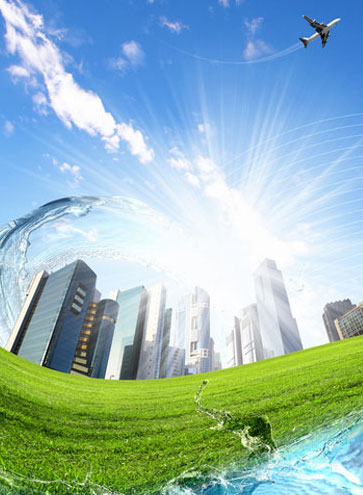What Is Hydroelectric Power?
Hydropower or hydroelectricity is a method of generating electricity with kinetic energy of moving water. Water flows in a stream from melted snow on mountains or rain and eventually moves to ocean. Running water moves blades of turbine and run generator for producing electricity.
This method of producing energy is used since ancient times, as Greeks uses running water to grind wheat. In 1879, very first Hydroelectric plant was built at Niagara Falls which became a milestone for further developments in this area. Industrial revolution in late 19th century was one major reason of using power of water for different purposes. Hushing was introduced in that period, which later evolved into hydraulic mining.
Hydropower is based on simple concepts i.e. moving water turns a turbine, the turbine spins a generator, and electricity is produced. Many other components may be in a system, but it all begins with the energy already within the moving water. Water power is the combination of head and flow. Both must be present to produce electricity. Consider a typical hydro system. Water is diverted from a stream into a pipeline, where it is directed downhill and through the turbine (flow). The vertical drop (head) creates pressure at the bottom end of the pipeline. The pressurized water emerging from the end of the pipe creates the force that drives the turbine. More flow or more head produces more electricity. Electrical power output will always be slightly less than water power input due to turbine and system inefficiencies.
- Head is water pressure, which is created by the difference in elevation between the water intake and the turbine. Head can be expressed as vertical distance (feet or meters), or as pressure, such as pounds per square inch (psi). Net head is the pressure available at the turbine when water is flowing, which will always be less than the pressure when the water is turned off (static head), due to the friction between the water and the pipe. Pipeline diameter has an effect on net head.
- Flow is water quantity, and is expressed as “volume per time,” such as gallons per minute (gpm), cubic feet per second (cfs), or liters per minute (lpm). Design flow is the maximum flow for which your hydro system is designed. It will likely be less than the maximum flow of your stream (especially during the rainy season), more than your minimum flow, and a compromise between potential electrical output and system cost.
Measuring Head & Flow: Before you can begin designing your hydro system or estimating how much electricity it will produce, you´ll need to make four essential measurements:
- Head (the vertical distance between the intake and turbine)
- Flow (how much water comes down the stream)
- Pipeline (penstock) length
- Electrical transmission line length (from turbine to home or battery bank)
Your site´s head and flow will determine everything about your hydro system—pipeline size, turbine type, rotational speed, and generator size. Even rough cost estimates will be impossible until you´ve measured head and flow.
How hydroelectric power plant work:
Hydropower plant is combination of three different parts, an electric plant, a dam and a reservoir. Electric plant is the unit where electricity is produced, dams store water and can be open or closed to control flow of water, reservoir keeps extra storage and provide it to dam when required.
Dam
Conventional Hydroelectric plants rely on a dam that keeps water and act as recreational lake at time of requirement. Another purpose served by dams is that it increases the height of water so that in can fall at speed with more kinetic energy.
The turbine
Main purpose of using running water in power plant is to rotate blades of turbine. This turbine generates electricity with rotation of blades and transfers this energy to batteries or grids.
Generator
Generators produce current from rotation of blades and convert DC current into useable form, AC current. This is also known as heart of hydropower plant and is basis on a shaft, excitor, rotor and stator.
The Transformer
transformer is important part of Hydroelectric plant. It regulates the voltage of electricity generated and then moves it towards storage area.
Power lines
To carry power out of the plant four different types of wires are used. Three carry current that is produced simultaneously while one carries neutral current.
Outflow pipelines
Once water serves its purpose of moving the blades, it flows out from the hydropower plant. To carry this water out tailraces are used that move water to river or ocean.
Types of Hydro-Power Systems
- Impoundment: An impoundment facility, typically a large hydropower system, uses a dam to store river water in a reservoir. The water may be released either to meet changing electricity needs or to maintain a constant reservoir level.
- Diversion: A diversion, sometimes called run-of-river, facility channels a portion of a river through a canal or penstock. It may not require the use of a dam.
- Pumped Storage: When the demand for electricity is low, a pumped storage facility stores energy by pumping water from a lower reservoir to an upper reservoir. During periods of high electrical demand, the water is released back to the lower reservoir to generate electricity.
Sizes of Hydropower
- Large Hydropower (Above 30,000KW electricity production capacity) – Impoundment System(Dam)
- Small Hydropower (100-30,000 KW electricity production capacity)
- Micro Hydropower (5- 100KW electricity production capacity)-Diversion-Run of the River – LowHead
- Pico Hydropower (upto 5KW electricity production capacity)-

